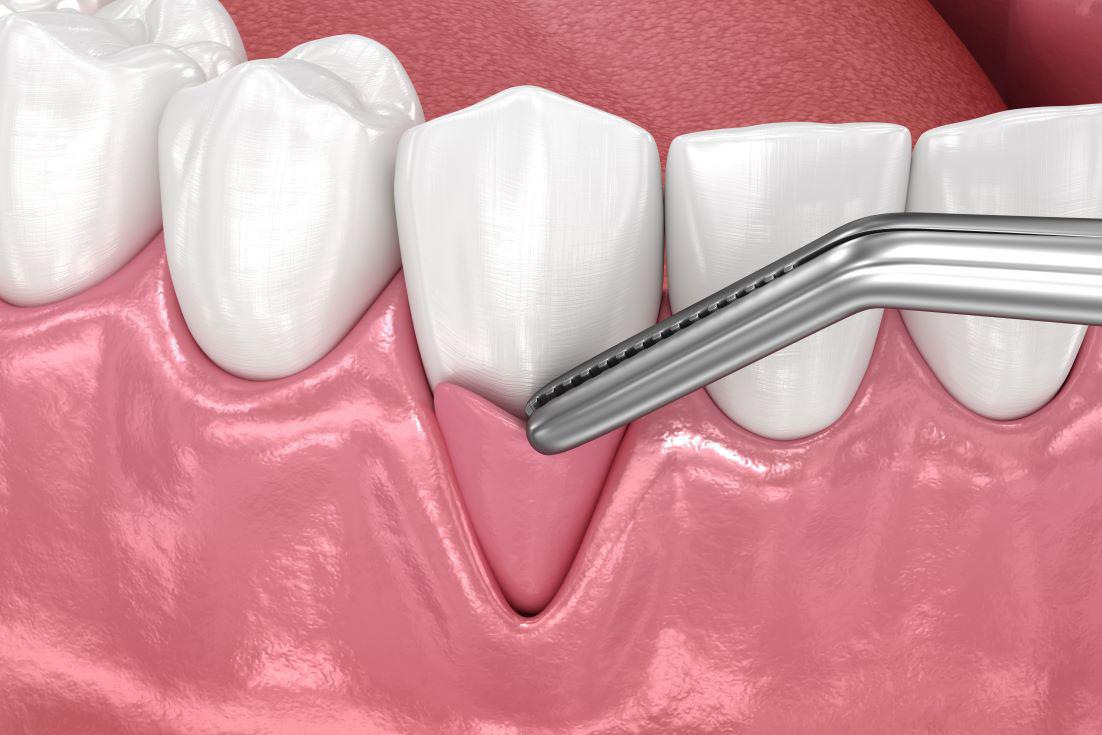Healthy gums are the foundation of a strong smile, protecting the roots of your teeth and keeping your oral health in balance. When gum tissue begins to recede or weaken, it can expose the tooth roots, leading to sensitivity, aesthetic concerns, and a higher risk of decay. Fortunately, gum grafting and soft tissue grafting are two effective treatments that restore and protect the gum line. If you’ve noticed gum recession or changes in your smile, schedule an appointment with your dentist to discuss whether one of these treatments may be right for you.
What Is Gum Recession?
Gum recession occurs when the gum tissue surrounding the teeth pulls back, exposing more of the tooth or even the root. It can result from factors such as periodontal disease, aggressive brushing, tobacco use, or even genetics. While it might start as a cosmetic concern, gum recession can progress into a serious dental problem if left untreated. The exposed roots not only increase tooth sensitivity but also make teeth more vulnerable to decay and infection. Grafting procedures are designed to correct this by rebuilding the gum tissue.
What Is Gum Grafting?
Gum grafting is a procedure that involves taking tissue, often from the roof of your mouth, and attaching it to areas where gum tissue has receded. This treatment strengthens the gum line, protects exposed roots, and improves the appearance of the smile. Gum grafting is particularly effective for patients with advanced gum recession or when multiple teeth are affected. Although recovery can take some time, the results are long-lasting and provide both functional and cosmetic benefits.
What Is Soft Tissue Grafting
Soft tissue grafting is a broader term that includes different methods of rebuilding the gum line, depending on the patient’s needs. Unlike traditional gum grafting, soft tissue grafts may use donor tissue or tissue substitutes rather than harvesting from the patient’s own mouth. This option can reduce discomfort and speed up healing. Soft tissue grafting can be tailored to the severity of gum loss, making it a versatile solution for patients with varying degrees of recession.
Comparing the Two Approaches
While gum grafting and soft tissue grafting are closely related, there are key differences between them. Gum grafting typically uses the patient’s own tissue, making it a strong and reliable choice for severe gum recession. However, it can involve more discomfort during recovery since it requires tissue removal from another part of the mouth. Soft tissue grafting, on the other hand, may use donor tissue or substitutes, which avoids the need for a second surgical site and can mean a smoother recovery. Your dentist will evaluate your level of recession, oral health, and personal preferences before recommending the most suitable option.
Benefits of Grafting Procedures
Both gum and soft tissue grafting provide important benefits beyond improving appearance. They protect the tooth roots from decay, reduce sensitivity to hot and cold foods, and help prevent further gum recession. These procedures also restore a balanced gum line, giving you a healthier, more attractive smile. By addressing gum recession early with a grafting treatment, you can avoid more extensive dental problems in the future.
Recovery and Aftercare
Healing from grafting procedures typically involves some tenderness and swelling, which usually subside within a week or two. Patients are often advised to stick to soft foods and avoid brushing directly at the graft site during the early stages of healing. Your dentist may recommend using a special mouth rinse to keep the area clean and reduce the risk of infection. With proper aftercare, most patients experience excellent results and lasting protection for their gums and teeth.
Who Needs Gum or Soft Tissue Grafting?
Not every case of gum recession requires a grafting procedure, but for patients with exposed roots, discomfort, or significant cosmetic concerns, these treatments can be life-changing. If you’ve noticed your teeth appear longer than before, or if you frequently experience sensitivity, it’s worth consulting your dentist. Early intervention makes treatment simpler and more effective, ensuring your oral health stays on track.
Restoring Balance to Your Smile
Choosing between gum grafting and soft tissue grafting depends on the severity of your recession, your comfort with the procedure, and your long-term goals. Both treatments are proven ways to restore gum health and protect your teeth from damage. If you’ve been struggling with gum recession or are concerned about the appearance of your gums, schedule a consultation today. Our team can evaluate your needs, explain the options, and guide you toward the best solution for a healthier, more confident smile.


